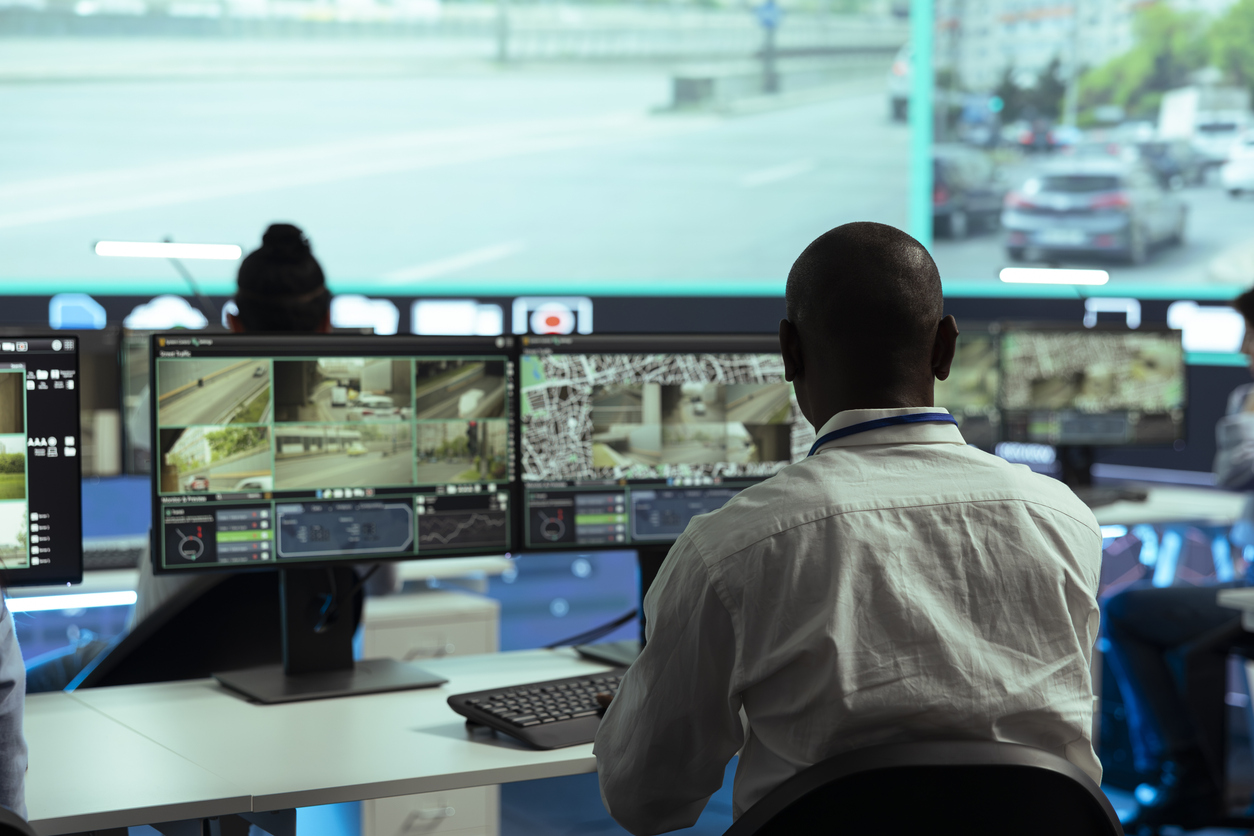Fire prevention is an extremely important issue. These events not only cause irreparable damage to the environment, but also put the lives of thousands of people and animals at risk, as well as the infrastructure of cities.
In recent years, Brazil has faced a series of forest and urban fires, resulting in serious consequences such as loss of biodiversity, air pollution and, in some cases, human tragedies. According to data from the National Institute for Space Research (INPE), the number of fires has shown an alarming increase, especially during periods of drought, in regions such as the Amazon and the Cerrado.
However, technological developments are fostering innovative solutions for fire prevention. In this scenario, monitoring technologies are emerging as powerful allies in early detection and rapid response to fires, allowing authorities and the population to intervene before fires spread.
In this article, we will explore how these technologies can transform the way we deal with the risk of fires, safeguarding lives and nature.
What are fire monitoring technologies?
Fire monitoring technologies refer to a set of tools and devices designed to detect, monitor and prevent the emergence of fires in various areas, such as forests and urban zones. These technologies include:
- Heat Sensors: Devices that detect temperature variations and identify risk areas;
- Drones: Unmanned aerial vehicles equipped with cameras and sensors that perform aerial monitoring, providing a broad view of the area;
- Thermal Cameras: Cameras that detect infrared radiation, aiding in the identification of heat sources, even in low visibility conditions;
- Early Warning Systems: Connected networks that send real-time notifications about the detection of smoke or heat.
These technologies work together to create an effective monitoring system. For example, heat sensors can be installed in strategic areas, sending real-time data to a monitoring center. When a sensor detects an increase in temperature, an alert signal is generated, allowing response teams to act quickly.
Various technologies are currently being used in different sectors:
| Area | Technology used | Description |
| Forests | Cameras on fixed mobile towers | Used for aerial monitoring of large areas, with cameras that operate 24/7 and have images processed for smoke recognition. |
| Urban | Smoke and heat sensors | Installed in buildings and public spaces, these sensors detect fires at an early stage, enabling evacuation and rapid response. |
| Industries | Automatic monitoring systems | Technologies that integrate sensors with management software, automatically notifying teams if a fire risk is detected. |
These examples demonstrate how monitoring technologies are being applied in different contexts to increase safety and minimize the risks associated with fires. The integration of these technologies not only improves the efficiency of prevention operations, but also saves lives and protects the environment.
Benefits of using monitoring technologies
Implementing monitoring technologies for fire prevention brings a number of significant benefits that can make a difference in protecting lives and the environment. Below, we list the main benefits:
- Early Detection: The use of sensors and cameras enables the identification of heat and smoke sources in their early stages, increasing the chances of containment before the fire spreads;
- Rapid Response: With automatic alerts and real-time information, emergency teams can act quickly, minimizing the impact of the fire;
- Damage Reduction: Effective prevention and early containment help reduce material and environmental damage, preserving natural resources and properties.
Studies have shown the effectiveness of these technologies. A report by the Brazilian Civil Defense Agency revealed that the use of smoke sensors in urban areas resulted in a 30% reduction in the response time of firefighting teams. In addition, a study carried out in forest regions showed that areas monitored with drones and sensors saw a 40% reduction in forest fires during the last season.
These benefits demonstrate how technology is a powerful ally in the fight against fires. The integration of modern monitoring systems provides greater security for communities and the environment, as well as improving the efficiency of operations.
How monitoring technologies help prevent fires at an early stage

They play a key role in early fire prevention, operating in real time to identify and respond to threats before they become disastrous. This is achieved through a combination of sensors, cameras and data analysis systems that integrate to offer a comprehensive view of the areas being monitored.
Description of how technologies work in real time
Heat and smoke sensors: These devices detect temperature variations and the presence of smoke, sending immediate alerts to the relevant authorities;
Surveillance cameras: Equipped with artificial intelligence technology, these cameras can not only identify smoke, but also analyze suspicious behavior, such as unauthorized burning;
Monitoring drones: Drones equipped with thermal cameras fly over vulnerable areas, making it possible to see fire outbreaks in hard-to-reach places;
Data analysis systems: Platforms that integrate information from different sources (sensors, cameras, meteorological data) to generate reports and forecasts that help make quick decisions.
Future of monitoring technologies in fire prevention
The future of monitoring technologies in fire prevention promises to be revolutionary, with innovations that enhance detection, response time, and risk management. As we face a global scenario of climate change and rapid urbanization, it is essential to adopt technological solutions that evolve with the needs for safety and sustainability.
Emerging trends and innovations in the field of fire monitoring
Artificial intelligence monitoring: AI is becoming a central component in data analysis. Intelligent systems can predict the likelihood of fires based on historical data and current weather conditions;
Use of autonomous drones: Drones equipped with sophisticated sensors and high-definition cameras are becoming essential tools. They can be programmed to carry out regular monitoring of risk areas without the need for human intervention;
Big data analysis platforms: Collecting and analyzing large volumes of data enables a deeper understanding of fire patterns, helping to create more effective prevention strategies;
Real-time alert apps: Apps that connect citizens and authorities allow communities to report fire outbreaks and receive updates on the situation in real time;
Integrated management systems: The combination of various technologies on a single platform can provide a holistic view of the situation, enabling quicker and more informed decision-making.
Discussion on integration with other technologies
The integration of monitoring technologies with other innovations, such as artificial intelligence, is transforming the fire prevention landscape:
Artificial intelligence: Machine learning algorithms can analyze data patterns and predict where and when fires are most likely to occur, helping with resource allocation and prevention.
ALTAVE Solution
ALTAVE offers a comprehensive monitoring system for fire prevention, combining artificial intelligence software with robust hardware. ALTAVE's Intelligent Monitoring for Fire Source Detection assists in the proactive mitigation of risks associated with these incidents, prioritizing the protection of life and the environment.
With our system, operators receive immediate alerts about the presence of fire outbreaks in monitored areas. As well as ensuring early detection, our solution enables rapid action to contain, rescue and further analyze reported incidents.
Cameras strategically positioned on fixed towers, or inserted into drones, constantly capture images, while advanced algorithms analyze these images in real time, identifying characteristic signs of fire.
With the ALTAVE solution, you can count on technology present on five continents and trusted by leaders in innovation, high flexibility and customization, continuous evolution with alert validation, 24/7 support throughout the project lifecycle and seamless integration with existing hardware.
Caso de sucesso
Samarco has implemented the ALTAVE fire detection system in the Serra da Gandalera National Park in Minas Gerais. The result was a significant operational improvement, with an 80% reduction in fire response times.
This shows that, with efficient strategies and the use of technology, it is possible to reduce response times and improve the efficiency of firefighting teams. In this way, it is possible to preserve the environment, flora and urban areas close to properties and industries.
The case demonstrates the tangible and measurable impact that our solution can provide, translating into real benefits for environmental preservation and efficiency in fighting fires in conservation areas.
Conclusion
Fires are a constant concern in Brazil, driven by climatic conditions and accelerated urbanization, which intensify the danger of large fires.
That's why having effective monitoring and a rapid response is essential if these outbreaks are to be eliminated as soon as possible, avoiding major disasters. In this way, we can preserve our environment and cities.
This monitoring can be done with the help of technology, which has evolved a lot in recent years. With the development of artificial intelligence and a larger database, there is advanced software that sends complete analyses in real time, so that authorities can react as quickly as possible - like the ALTAVE solution.
Taking care of our environment is essential if we are to continue living in an ever-better world.
About ALTAVE
ALTAVE is a Brazilian company, accredited as a Strategic Defense Company (EED), with patented technology in Brazil and abroad. The company has obtained CE marking, indicating the approval of its product quality to be marketed throughout the European Union.
ALTAVE has been offering efficient, differentiated and quality solutions for over 10 years for the Defense and Security, Energy, Mining, Ports, Agribusiness and Oil and Gas sectors.
Let's have a chat?
Contact us to learn more about how our solution can help your company!




